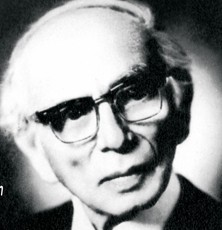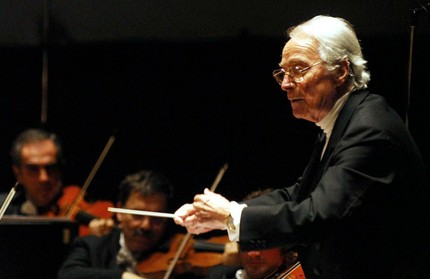
Leo Moritsevich Ginzburg |
Leo Ginsburg

The artistic activity of Leo Ginzburg began early. While studying at the piano class of the Nizhny Novgorod Music College with N. Poluektova (graduating in 1919), he became a member of the orchestra of the Nizhny Novgorod Union of Orchestral Musicians, where he played percussion instruments, horn and cello. For some time, Ginzburg, however, “changed” music and received the specialty of a chemical engineer at the Moscow Higher Technical School (1922). However, soon he finally understands what his real calling is. Ginzburg enters the conducting department of the Moscow Conservatory, studies under the guidance of N. Malko, K. Saradzhev and N. Golovanov.
In March 1928, the graduation concert of the young conductor took place; under his direction, the Bolshoi Theater Orchestra performed Tchaikovsky’s Sixth Symphony and Stravinsky’s Petrushka. After enrolling in graduate school, Ginzburg was sent by the People’s Commissariat for Education, the Bolshoi Theater and the Conservatory to Germany for further improvement. There he graduated (1930) from the department of radio and acoustics of the Berlin Higher School of Music, and in 1930-1931. passed the conducting course of G. Sherhen. After that, the Soviet musician trained at the Berlin opera houses with L. Blech and O. Klemperer.
Returning to his homeland, Ginzburg began an active independent creative activity. Since 1932, he has been working as a conductor at the All-Union Radio, and in 1940-1941. – Conductor of the State Symphony Orchestra of the USSR. Ginzburg played an important role in spreading orchestral culture in our country. In the 30s he organized symphony ensembles in Minsk and Stalingrad, and after the war – in Baku and Khabarovsk. For several years (1945-1948), the symphony orchestra of the Azerbaijan SSR worked under his direction. In 1944-1945. Ginzburg also took part in the organization of the Novosibirsk Opera and Ballet Theater and led many performances here. In the post-war period, he led the Moscow Regional Orchestra (1950-1954). Finally, a significant place in the performing practice of a conductor is occupied by touring activities in the vast majority of cultural centers of the country.
“A performer on a large scale, especially drawn to large forms of the oratorio type, a brilliant connoisseur of the orchestra, L. Ginzburg has an unusually sharp sense of musical form, a bright temperament,” writes his student K. Ivanov. The conductor’s vast and varied repertoire includes the work of Russian classics (Tchaikovsky, Rachmaninov, Scriabin, Glazunov). L. Ginzburg’s talent was most clearly revealed in the performance of Western classical works (Mozart, Beethoven and, especially, Brahms). A prominent place in his performing activities is occupied by the work of Soviet composers. He owns the first performances of many works of Soviet music. L. Ginzburg devotes a lot of energy and time to working with young authors, whose compositions he performs. Ginzburg conducted for the first time the works of N. Myaskovsky (Thirteenth and Fifteenth Symphonies), A. Khachaturian (Piano Concerto), K. Karaev (Second Symphony), D. Kabalevsky and others.
Special emphasis should be placed on Professor L. Ginzburg’s merits in educating the conductor’s shift. In 1940 he became head of the conducting department at the Moscow Conservatory. Among his students are K. Ivanov, M. Maluntsyan, V. Dudarova, A. Stasevich, V. Dubrovsky, F. Mansurov, K. Abdullaev, G. Cherkasov, A. Shereshevsky, D. Tyulin, V. Esipov and many others . In addition, young Bulgarian, Romanian, Vietnamese, Czech conductors studied with Ginzburg.
L. Grigoriev, J. Platek, 1969





